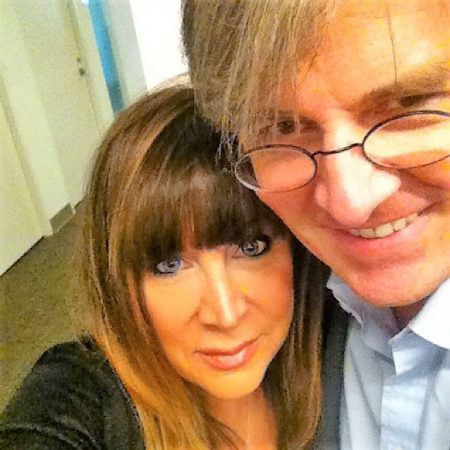
Michelyn Camen with Frank Voelkl circa 2014 (selfie)
The perfumer who inspired the idea of our series on perfume “signatures” was Frank Voelkl, Principal Perfumer at Firmenich. In 2014, Michelyn Camen was visiting Frank Voelkl at the Firmenich offices in New York City to interview him. She was “nosing around” and recognized unlabeled fragrance mods as Frank’s work although he was not credited. During the summer of 2016, while Michelyn was on a five-mile walk, she called Mark Behnke for their bi-annual hour long chat.
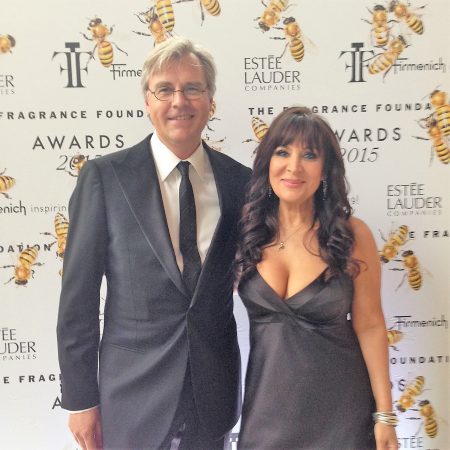
Michelyn Camen with Frank Voelkl at The Fragrance Foundation Awards, 2015 (the year Alex C. Musgrave’s essay for CaFleureBon won an award). photo: perfumer Luca Maffei
During the discussion we talked about a sample of a new perfume where the perfumer’s name had not been revealed. We both suspected it was Mr. Voelkl. We said how Frank Voelkl has such a recognizable signature to the perfumes he creates. Michelyn knew there was something here which could be explored more deeply. Which we have done by looking at the concept from the beginning of modern perfumery. We felt it was time to return to our original inspiration. Michelyn reached out and spoke with Mr. Voelkl to get more background (which confirmed to our initial beliefs).
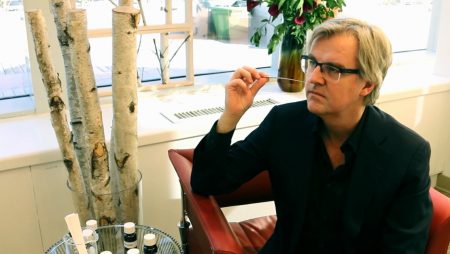
Frank Voelkl of Firmenich in his office, courtesy of Firmenich©
When she told him the story above, he laughingly related that the proprietary software at Firmenich identifies Frank Voelkl’s perfume 98% of the time. When she asked why he thinks this is the case he replied “proportions”. It reminded us of “The Golden Ratio” which has been used by artists and architects to create something which is more aesthetically pleasing. The late great perfumer Mona di Orio applied this to her perfumes. We think there is a new value which defines Mr. Voelkl’s perfumes… “The Voelkl Ratio”.
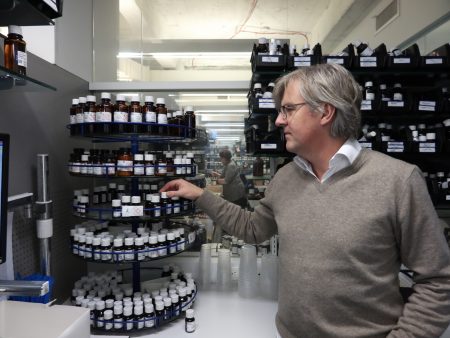
Frank Voelkl at work courtesy of Firmenich©
When he was asked about this he replied, “It actually starts first with the choice of ingredients I like to use out of our palette of roughly 1500 ingredients. In reality I probably most often use around only 400 of them and only occasionally I will use some of the others. And yes, I mostly use these ingredients in similar proportions.”
One of the places where this completely fits in with the brand aesthetic is at Le Labo. Fabrice Penot and Eddie Roschi would employ this precision in twelve of the twenty-three perfumes they have released to date. It is evident in the balance between the petitgrain, clove, and vetiver of Limette 37 on the lighter side. It also exists on the darker ingredients as evidenced in the intermix of rum, tobacco, and cedar in the Miami City Exclusive Tabac 28. His work for Le Labo has spanned the spectrum each time displaying The Voelkl Ratio.

photo provided in 2012 by Le Labo©
The pinnacle of this is Le Labo Santal 33 which has become one of the flagship fragrances for Le Labo. It is a ratio of two ingredients. Of course the sandalwood which is made less creamy through the addition of cedar and ambrox. In proportion a leather accord is given texture through cardamom, violet, and papyrus. It is one of the great perfumes of the last twenty years.
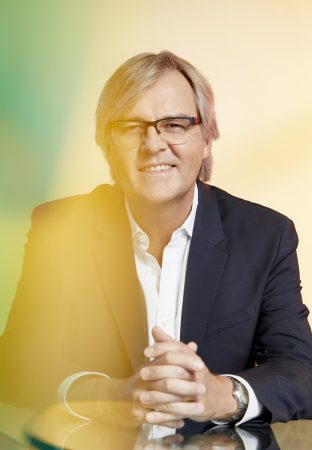
photo courtesy of Firmenich ©
Mr. Voelkl has also found a creative team where his ratio can be the star at Nomenclature. Creative directors Karl Bradl and Carlos Quintero have used him in six of their ten releases to date. This is a brand which features a synthetic perfume ingredient as the keynote. When asked about the choice of natural or synthetic ingredients he pointed to Nomenclature in his answer, “I have an equal love and passion for natural and molecules and believe that they should coexist, like all the religions in this world. I use molecules and naturals for different reasons and they both have a unique role to play in my formulas. That is also why in my creations for Nomenclature there will always be a molecule as a hero ingredient, but it will be complemented by naturals it evokes.” Even here The Voelkl Ratio remains.
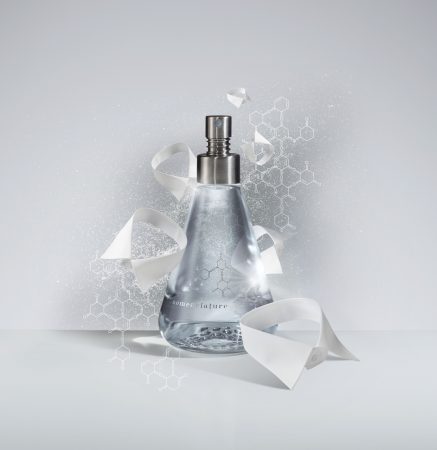
adr_ett by Nomenclature photo provided by Nomenclature
One of the first compositions for Nomenclature was efflor_esce where he used the gigantic synthetic jasmine ingredient Paradisone as the keynote. He then takes neroli, tuberose, and osmanthus and infuses them within the expansiveness of the synthetic core. It modulates that ingredient by surrounding it with these and some citrus it completes the ideal synthetic to natural ratio. When he was asked if Mr. Voelkl thought he had a signature accord he said, “I have to say that the blend of Iris and Musk in adr_ett by Nomenclature has been a little bit of a signature accord for me lately but I’m sure that there will be new and different ones to follow.” Which brings us back to Le Labo because that same combination was there for the first perfume, he made for them, Iris 39. If you compare the two you can see the evolution of The Voelkl Ratio over time.
Once you perform that exercise you will also probably be able to identify Mr. Voelkl’s work as readily as we do.
–Mark Behnke, Guest Contributor (Editor of Colognoisseur and Michelyn Camen, Editor-in-Chief of ÇaFleureBon
Follow us on Instagram @cafleurebon, @colognoisseur @Frankvoelkl @firmenichfine @nomenclature_nyc
Here are the links to Mark’s and Michelyn’s previous Perfume Signature Articles: Jacques Guerlain, Ernest Daltroff and Francois Coty here, Ernest Beaux and Henri Almeras here, Jean Carles and Germaine Cellier here, Edmond Roudnitska here, and Olivia Giacobetti here.
